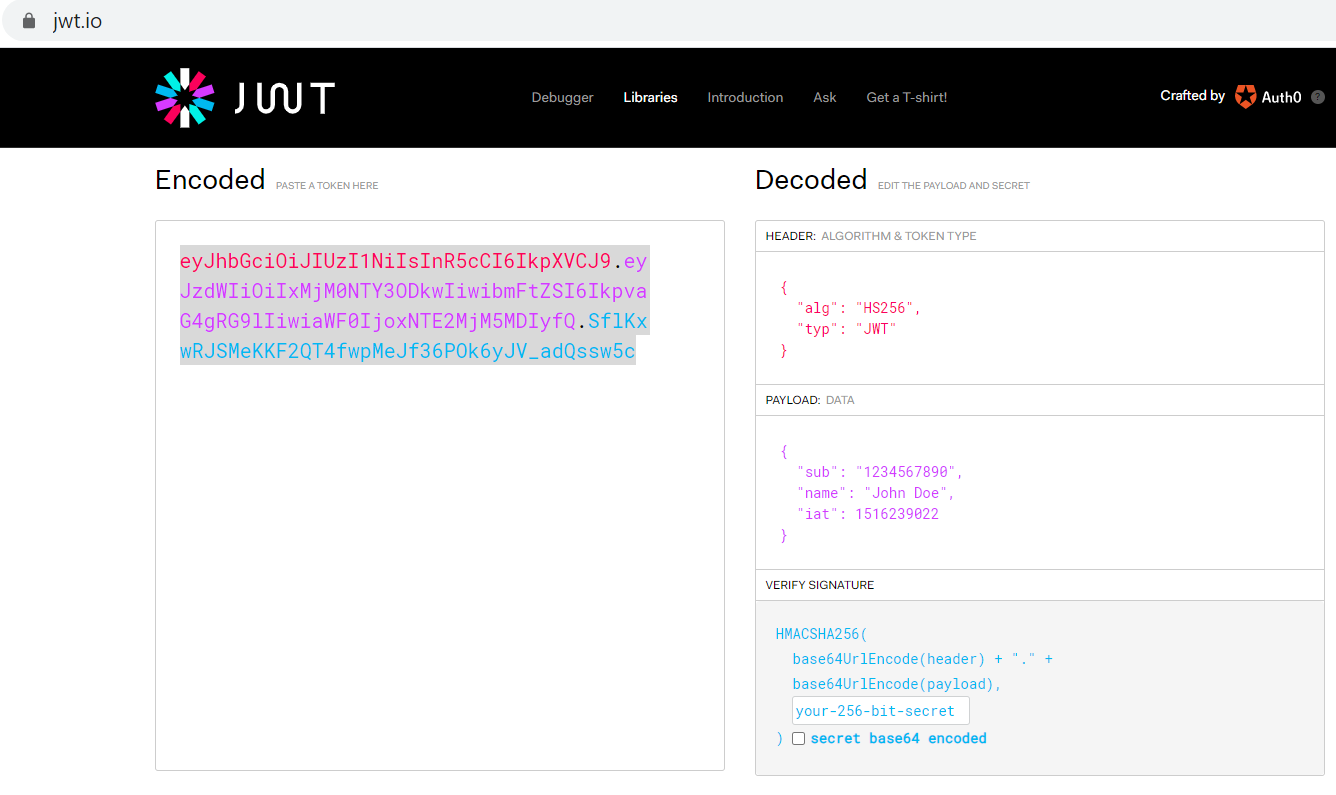
In the code above you check to see if the user’s email address (that was provided in the JWT because we requested the email scope from the authorization server) is in the list of admins. You will see output like the following when it’s finished: It will add the redirect URIs you specified and grant access to the Everyone group. The Okta CLI will create an OIDC Web App in your Okta Org. Then, change the Redirect URI to and use for the Logout Redirect URI. Select the default app name, or change it as you see fit.

If you already have an account, run okta login. Install the Okta CLI and run okta register to sign up for a new account.
Decode jwt hs256 token how to#
You will just learn how to decode and use the JWTs that are used in the OpenID authentication handshake.īefore you begin, you’ll need a free Okta developer account. So for this tutorial, you will use OpenID Connect for authentication so you won’t need to worry about generating and validating JWTs. Security systems are complex, and there are many opportunities to get something wrong.

While you could invent your own security system using JWTs, that would probably be a very bad idea. Set up an Authorization Server to Generate JWTs Before you run the project you will need to add some configuration settings from Okta, which you will do in a moment. Now when you run the project, it will use the Kestrel web server instead of IIS Express. Next, click on the down arrow near the green start button and change startup action from IIS Express to DecodeJWTs. To get started, clone or download the starter project from GitHub, and open the solution in Visual Studio 2019. If you’re using OpenID Connect, there is actually a better way to access the information in the JWTs used in the authentication process, so read on! Clone the JWT C# Project It does not validate the JWT to ensure that it hasn’t been forged or tampered with. Note that the code above just reads the information from the JWT.

ReadJwtToken ( jwt ) // now do something with token.Claims, token.Audiences, etc. Var jwt = "(the JTW here)" var handler = new JwtSecurityTokenHandler () var token = handler.


 0 kommentar(er)
0 kommentar(er)
